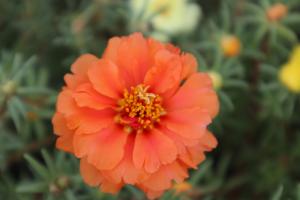Can a Chitalpa Tree be Planted in Western Exposure?
If you're looking for a beautiful and unique flowering tree to add to your landscaping project, a chitalpa tree could be just what you're looking for. However, before you invest in this stunning plant, you must first consider its planting requirements, especially in terms of sun exposure. In this article, we will explore whether it's possible to plant a chitalpa tree in western exposure areas and the factors to consider when choosing a planting location.
Understanding Chitalpa Trees
Chitalpa trees are hardy plants that grow rapidly, reaching heights of up to 30 feet in as little as five years. They are a hybrid of two plant species: the desert willow and the catalpa tree. These plants feature a striking appearance, with showy flowers that bloom from spring to fall, attracting pollinators like bees and butterflies. Because of their rapid growth rate, chitalpa trees can be a great addition to a landscaping project or garden.
The Importance of Sun Exposure
Sun exposure is an important factor to consider when planting a chitalpa tree. These trees require a lot of sun to grow properly, making western-exposed areas an ideal planting location. However, too much direct sunlight can cause the tree's leaves to wilt and burn, especially during hot summer months. On the other hand, lack of sunlight can result in stunted growth or failure of the tree to thrive. Therefore, it's important to achieve a delicate balance between sun exposure and shade.
Ideal Planting Location for a Chitalpa Tree
When choosing a location to plant your chitalpa tree, it's crucial to ensure the area gets between six and eight hours of sunlight every day. However, the area should also be adequately shaded to protect the tree from excessive sun exposure during the hottest times of the day. Therefore, western exposure areas with some protection from the afternoon sun, such as near a house or a large tree, are ideal locations for planting a chitalpa tree.
Other Factors to Consider
Aside from sun exposure, other factors to consider when planting a chitalpa tree include proper soil drainage, soil type, and adequate space for growth. Chitalpa trees do best in well-draining soil, so it's necessary to ensure the area has good drainage to prevent root rot. Soil type is also important, with chitalpa trees preferring sandy or loamy soils with a neutral pH range. Lastly, it's essential to provide adequate space for your tree's growth, such as at least thirty feet of open airspace around it.
Conclusion
In conclusion, a chitalpa tree can be planted in western exposure areas, provided that the area gets the right amount of sunlight and adequate shade. Other factors to consider when planting this tree include proper soil drainage, soil type, and adequate space for growth. By taking these factors into account, you can ensure that your chitalpa tree will thrive and add beauty to your landscaping project for years to come.

 how many times do yo...
how many times do yo... how many planted tre...
how many planted tre... how many pine trees ...
how many pine trees ... how many pecan trees...
how many pecan trees... how many plants comp...
how many plants comp... how many plants can ...
how many plants can ... how many plants and ...
how many plants and ... how many pepper plan...
how many pepper plan...































